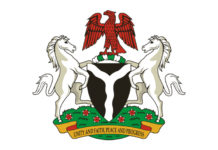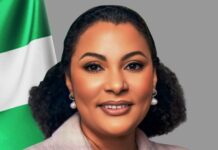By Abu, I. Michael.
The dangers and risks of operating without a National Geocentric Datum (NGD) in any of the countries of the contemporary world are grievous, to say the least. Geocentric Datum is a computation value and surveying substructure that facilitates successful taking-off and landing of aircrafts, navigation on waters and even lands, monitoring for earthquake prediction, surveillance, defence and security actions. The risks are high as such countries may not be congenial to aircrafts especially those on auto and other modern carriers, and the set-up for robust Internally Generated Revenue (IGR) which the government and its subjects crave for will definitely be ineffectual. It is imperative to also point out that the success of the Sustainable Development Goals (SDGs), and many operations of the economy unmentioned largely depends on it. Aggregately, it is therefore, critical to decision-making, planning and implementation.
Nigeria has been operating on a local fixed point of scale or operation, the Minna Datum known as L-40. It facilitates machining operations, calculations or measurements. Measurement of positions and heights on earth can only be effective with horizontal and vertical datums.
In surveying, datum is the surface or point of reference used to determine or define points of locations on the earth surface. Other origins of coordinate system being used in surveying include Geoids, Ellipsoids and local datums, like the Nigeria’s L-40. According to records, the Minna Datum as Nigeria’s fundamental point references the Clarke 1880 modified Ellipsoid and Greenwich Prime Meridian. The Minna Datum is non-geocentric and inherent in its network are scale error and undefined origin that hinder accurate determination of transformation parameters.
Because of the relevance of National Geodetic System to various socioeconomic activities that will enhance national development, defence and security, countries are improving on their local datums to align with the Global Geocentric Coordinates System based on satellite measurement operations.
At the Survey Coordination and Meeting of the Advisory Board on Survey Training Conference held recently in Makurdi, Benue State, the Acting Director of the Department of Geodesy, Surv. Abubakar Danladi Ebune made a presentation on behalf of the Office of the Surveyor General of the Federation (OSGoF); issues raised by the surveyors after the presentation on the Nigerian National Geodetic System called for urgent action of the Federal Government in form of release of special funds and other support for the completion of the project that has been staggering for years due to paucity of funds. The Minna Datum was established with conventional methods and procedures, and the surveying and mapping work carried out based on the datum usually confined to limited areas, a major reason for the implementation and adoption of a National Geodetic Coordinates Frame.
OSGoF is responsible for developing and sustaining the National Reference System for Nigeria, and it must be adequately provided for to function appropriately for the corporate existence, collective safety and advancement of the Nigerian economy.
The reasons for Nigeria to transit from the Minna Datum as captured by Surv. Ebune in his presentation are that “adopting a geocentric datum, specifically International Terrestrial Reference Frame (ITRF) 2020, is essential for sustainable economic and social development; the Global Navigation Satellite Systems (GNSS) capabilities need to be fully optimized for the transition from a local best-fit horizontal datum to a global geocentric datum; and a Geocentric Datum of Nigeria referenced to ITRF 2020 would enhance various geodetic activities, including surveying, mapping, navigation, monitoring, and earthquake prediction.
ITRF 2020 is said to be the modern international reference frame based on four space geodetic techniques: GNSS, Very Long Baseline Interferometry (VLBI). This is a space geodetic technique based on radio astronomy. The third is the Satellite Laser Ranging (SLR) for detecting satellite’s changes or variations from its projected trajectory/orbit; and the Doppler Orbitography and Radiopositioning Integrated by Satellite (DORIS), a French satellite system used to defining satellite orbits for positioning.
The NGD 2014 project is aimed to determine Nigeria’s Geocentric Datum using five years of GNSS data from Nigeria GNSS Reference Network (NIGNET)’s Continuously Operating Reference Station (CORS). CORS is a GNSS receivers, and is being adopted as the standard to permanently materialize reference points to geo-referencing applications. It is important to note that the NGD 2014 provides direct compatibility with GNSS measurements and mapping or geographical information system (GIS) which are also normally based on ITRF geodetic datum. It will allow more efficient use of an organization’s spatial data resource by reducing the need for duplication and unnecessary translation; help promote wider use of spatial data through one user-friendly data environment; reduce the risk of confusion as GNSS, GIS and navigation systems become more widely used and integrated into business and recreational activities; ease the burden of surveyors in providing basic mapping and positioning services to the larger public; and enhance datum consistency and ease of data sharing across the states of the country, Africa and countries all over the world.
However, nothing much has been done for the realization of the Nigeria National Geocentric Datum hence OSGoF has been hampered by poor funding; although, the Surveyor General of the Federation (SGoF), Surv. Abuduganiyu Adeyemi Adebomehin since assumption of office inaugurated several expert groups, one being chaired by a renowned Surveying and Geoinformatics, Professor Fajemirokun Francis Afolabi that have been working on various aspects for the eventual completion of the NGD project.
This project is strategically fundamental and deserves the support of all Nigerians; the President and the National Assembly ought to make it a priority and appropriate funds for its full realization.
Michael is Head, Press and Public Relations,
Office of the Surveyor General of the Federation.





